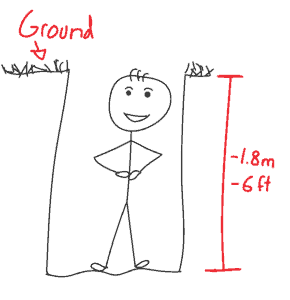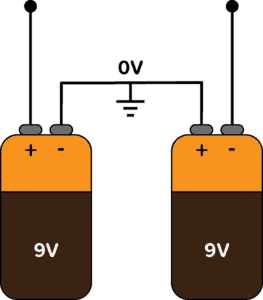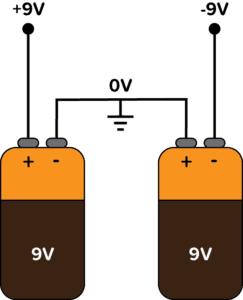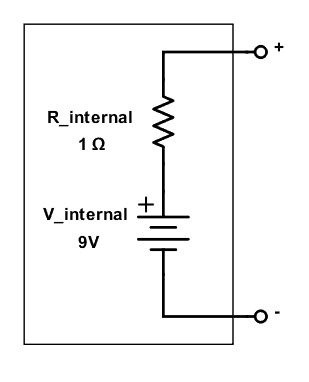Wednesday, 30 October 2019
3D printing used to make glass optical fiber preform
A stretchable stopwatch lights up human skin
Tuesday, 29 October 2019
Study shows ability to detect light from UV to the IR optical regimes using spin currents
An electronic signal expands a material by a factor of 100
Intuitive virtual reality: Bimodal 'electronic skin' developed
Monday, 28 October 2019
Tungsten suboxide improves the efficiency of platinum in hydrogen production
Giving valleytronics a boost
Tuesday, 22 October 2019
Magnetics with a twist: Scientists find new way to image spins
Paving the way for sensor interfaces that are 30 times smaller
Saturday, 19 October 2019
Novel nanoprobes show promise for optical monitoring of neural activity
Friday, 18 October 2019
Flexible, wearable supercapacitors based on porous nanocarbon nanocomposites
Wednesday, 16 October 2019
Alignment of single-wall carbon nanotubes along common axis
Tuesday, 15 October 2019
Researchers build a soft robot with neurologic capabilities
Controlling the charge state of organic molecule quantum dots in a 2D nanoarray
What is Negative Voltage?
I’m going to show you what negative voltage is by putting John into a hole. As you’ll quickly learn, it’s nothing weird or mystical.
Meet John. He is 1.8 meters (6 feet) tall.

What does it mean that John is 1.8 m tall? Could you find his height by only looking at his head?
No. You have to compare the top of his head to the ground he is standing on to be able to find his height. That John is 1.8 m tall really means that the top of his head is 1.8 m higher than the ground that he stands on.
It’s the same thing with voltage. You can’t say anything about the voltage without comparing it to another point.
It’s common to define a zero point (0V), or ground, in a circuit.
In a simple battery circuit, the ground point is usually the minus terminal of the battery. So if someone says that “this point is 5V”, they usually mean it’s 5V compared to ground.
Putting John in a Hole
Back to John. What if we dig a hole of 1.8 meters, then put John into the hole. (Poor John).
His feet are now 1.8 meters below the ground.

Another way of saying this is that his feet are at MINUS 1.8 meters.
John is still the exact same person, he’s just placed differently compared to the ground. Therefore the position of his feet becomes negative.
It’s the same with voltage.
Creating Negative Voltage
For example, imagine two 9V batteries.
Remember – a battery being 9V means the plus terminal is 9V higher than the minus terminal.
Now, let’s take one battery and say that its minus terminal is going to be the ground (0V) in our circuit.
What happens if we connect the plus of the second battery to the minus of the first one (i.e. we connect it to ground)?

Nothing really happens with the batteries. They’re exactly the same as they were before connecting them.
And no current flows.
But what is the voltage on the minus terminal of the second battery?
Since the minus is 9V lower than the plus, and since the plus is connected to ground, the minus would have to be minus 9V.

So we have created a negative voltage of 9V.
Or have we?
If you look closely, we haven’t really created anything.
We’ve just labeled the plus of the second battery 0V.
And we’ve labeled the minus of the second battery -9V, because it’s 9V lower than 0V.
When Do You Need Negative Voltage?
It’s not so much that you “need” negative voltage. But sometimes you get negative voltage in a circuit, and it’s good to know what it is.
One example where you get negative voltage is in the astable multivibrator circuit.
Sometimes you see circuits that need a power supply with three connections, for example, +9V, 0V, and -9V. This is very common for amplifier circuits.
But they might as well have said that the circuit needs +18V, +9V, and 0V (GND). It would have been the exact same thing, just with different names.
Questions?
If you find these lessons useful, you should check out Ohmify. It’s an online academy for electronics where you learn everything from how voltage works to how you can design a microcontroller circuit.
And there are a bunch of project plans you can follow to build cool things like robots, traffic lights, amplifiers, a kitchen timer, music synthesizers and more.
Click here to learn more about Ohmify.
Do you have any questions about negative voltage? Let me know in the comments field below.
Copyright Build Electronic Circuits
Monday, 14 October 2019
How to control friction in topological insulators
Saturday, 12 October 2019
Creating 2D heterostructures for future electronics
Friday, 11 October 2019
'Electroadhesive' stamp picks up and puts down microscopic structures
New soft actuators could make soft robots less bulky
Thursday, 10 October 2019
Intelligent, shape-morphing, self-healing material for soft robotics
Tuesday, 8 October 2019
Novel, high-performance diodes and transistors
Monday, 7 October 2019
Physicists unlock the mystery of thermionic emission in graphene
Picoscience and a plethora of new materials
Friday, 4 October 2019
Graphene turns 15 on track to deliver on its promises
Why does the battery voltage change?
Today I got a question from Garry on the Ohmify community.
[GARRY]:
“When I measure the voltage of my 9V battery using my multimeter I get a reading of 9.06 when it is not connected to any circuit. When I hook the battery up to a simple circuit (i.e. 325 Ohm resistor in series with a red LED) and measure the voltage drop across the battery I get a reading of 8.65 V – why the difference?”
[OYVIND]:
Great observation! That’s the difference between an ideal battery that we often use to make calculations in a circuit and a real battery.
The reason for this is that a real battery has an internal resistance. The size of the internal resistance depends on the battery type.

So the voltage you can squeeze out of a battery actually depends on what you connect to it!
In the image above, the battery has an internal resistance of 1 ohm. If you connect that to something of 500 ohms, you can figure out the battery voltage by using the voltage divider formula:
V = 9V * 500 ohm / (1 ohm + 500 ohm) = 8.98 V
If you connect it to something of 50 ohms, you get:
V = 9V * 50 ohm / (1 ohm + 50 ohm) = 8.82V
So there you have it! Because of the internal resistance of the battery, the voltage from the battery will change depending on the load you connect to it.
If you want to learn electronics, check out the electronics academy Ohmify. One of the main benefits is the community forum – where you’ll be able to ask all these questions that come up when you experiment with circuits.
Learn more about Ohmify here:
https://ohmify.com/join/
Keep On Soldering!
Oyvind @ build-electronic-circuits.com
Copyright Build Electronic Circuits
Thursday, 3 October 2019
Printed electronics open way for electrified tattoos and personalized biosensors
Keeping cool with quantum wells
Wednesday, 2 October 2019
Researchers repurpose failed cancer drug into printable semiconductor
Tunable optical chip paves way for new quantum devices
Ultra-fast optical way to extract critical information from quantum materials
Tuesday, 1 October 2019
Shape affects performance of micropillars in heat transfer
Just add water: Simple step boosts polymer's ability to filter CO2 from mixed gases
Chemicals for pharmaceuticals could be made cheaper and greener by new catalysts
Researchers develop recyclable, healable electronics
Electronics often get thrown away after use because recycling them requires extensive work for little payoff. Researchers have now found a w...
-
Do you need a MOSFET gate resistor? What value should it be? And should it go before or after the pulldown resistor? If you’re a bit impati...
-
I was first introduced to logic gates when I was around 14 years old. I had heard that computers consisted of ones and zeroes. But I didn’t...
-
CMOS (Complementary Metal Oxide Semiconductor) The main advantage of CMOS over NMOS and BIPOLAR technology is the much smaller power dis...